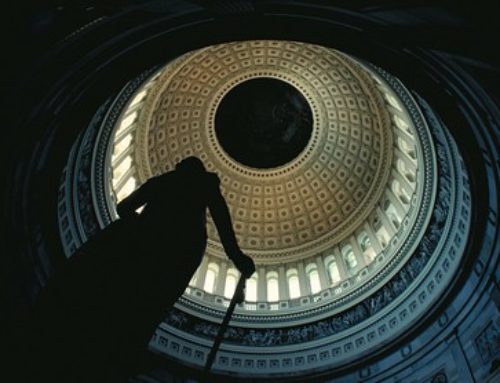Volume XVIII No. 38
Parents everywhere know that relenting to a temper tantrum just encourages bad behavior. With the government starting a new fiscal year October 1 and set to reach the debt ceiling shortly thereafter, the theatrics are in full display. Stomping their feet and holding their breath, policymakers are making all kinds of demands. But even if Congress manages to keep the government’s lights on and avoids having America’s checks bounce, we shouldn’t clap. By refusing to make any tough decisions to seriously rein in deficits they’ve put the country on a dangerous path towards another fiscal crisis.
It’s the right time to talk about fiscal crisis since this week marks the fifth anniversary of the great crash that thrust the global economy into a free-fall. The one that brought us extraordinary actions including a $700 billion bank bailout—that morphed into an auto bailout, a toxic securities fund, and more— and a $787 billion stimulus, all in attempts to stave off another Great Depression. And while the free-fall has been arrested, we’re 50 months into official economic recovery yet we’re not in the clear.
We can hear back-slapping lawmakers arguing “But wait, the federal budget deficit is declining!” Well, sort of. According to a statement from the nonpartisan Congressional Budget Office (CBO), “The federal budget deficit has fallen faster than we expected a few years ago, and projected deficits have been reduced.” But these prognosticators of good fortune conveniently overlook the unseemly part of CBO’s statement “However, relative to the size of the economy, debt remains historically high and is on an upward trajectory in the second half of the coming decade.”
The numbers don’t look good. It’s true that after the record deficit of $1.4 trillion in 2009, the budget deficit has steadily decreased to a projected $642 billion in 2013. It’s even expected to keep falling (under current law) – to an eventual low of $378 billion in 2015. But anyone tempted to start celebrating has clearly lost perspective. As a percentage of GDP, the deficit is nearly twice the historical average. And in just three short years, the downward trend reverses, saddling taxpayers with an $895 billion deficit by 2023. In the meantime, another $7 trillion will have been added to our current $17 trillion debt. Oh, and there’s that little issue of Medicare insolvency and strains put on Social Security as the baby boomer retirements go into full force.
Congress needs to heed the CBO’s warnings that a “large and continually growing federal debt” while decreasing national saving and future income, would “increase the probability of a fiscal crisis for the United States.” The debt would also limit the government’s ability to cut taxes and spend its way out of such a crisis. The result would be that, “future recessions and financial crises could have larger negative effects on the economy and on people’s well-being.” Uh-oh.
That future, however, is not preordained.
The single step of what may seem like a thousand mile journey would be passing a Continuing Resolution to fund government in the new fiscal year—one that can pass both chambers and actually be signed into law—and raising the debt ceiling so that the country’s word that it will pay what it already owes isn’t cheapened. Reforming the entitlement programs or rewriting the tax code isn’t possible in just the next few weeks, but there are a few more steps (not passing an unnecessary $1 trillion farm bill, starting to collect fair returns for federal natural resources like coal, not busting the agreed upon budget caps, and cutting unsuccessful defense projects to name a few) that would put the country on the right path towards fiscal sustainability. Then turn to tackle the big issues. Instead of coddling Congress in the next few weeks for (hopefully) managing to perform its primary function, like parents know, it’s time for some tough love.







Get Social